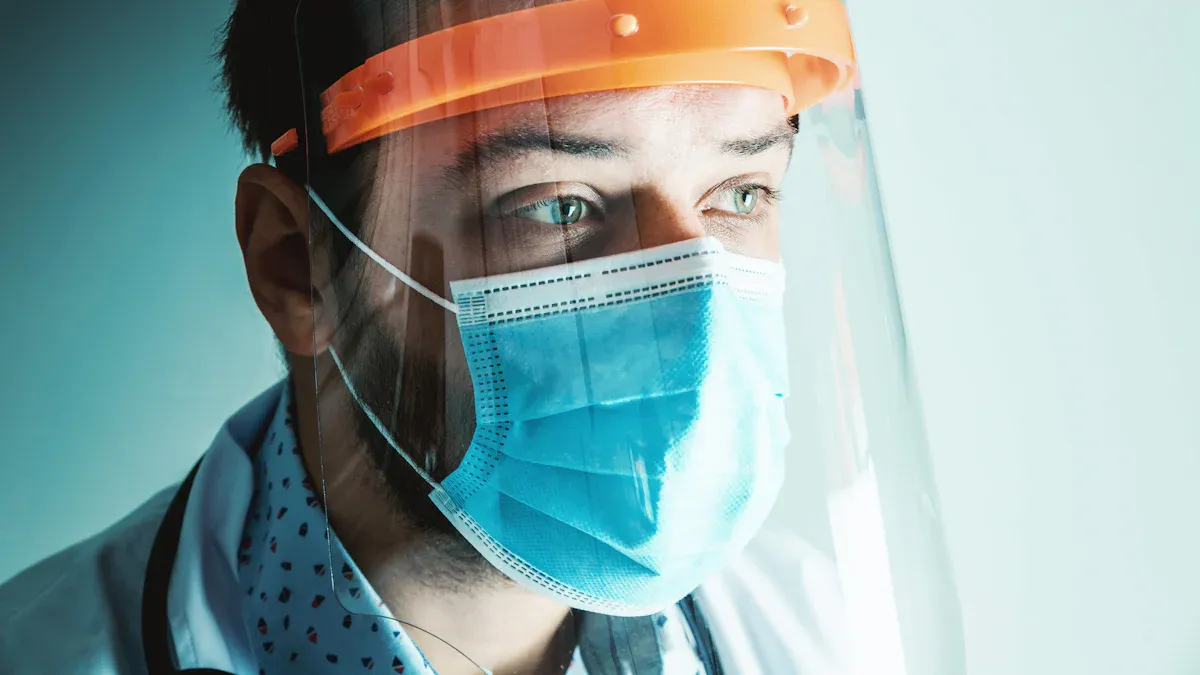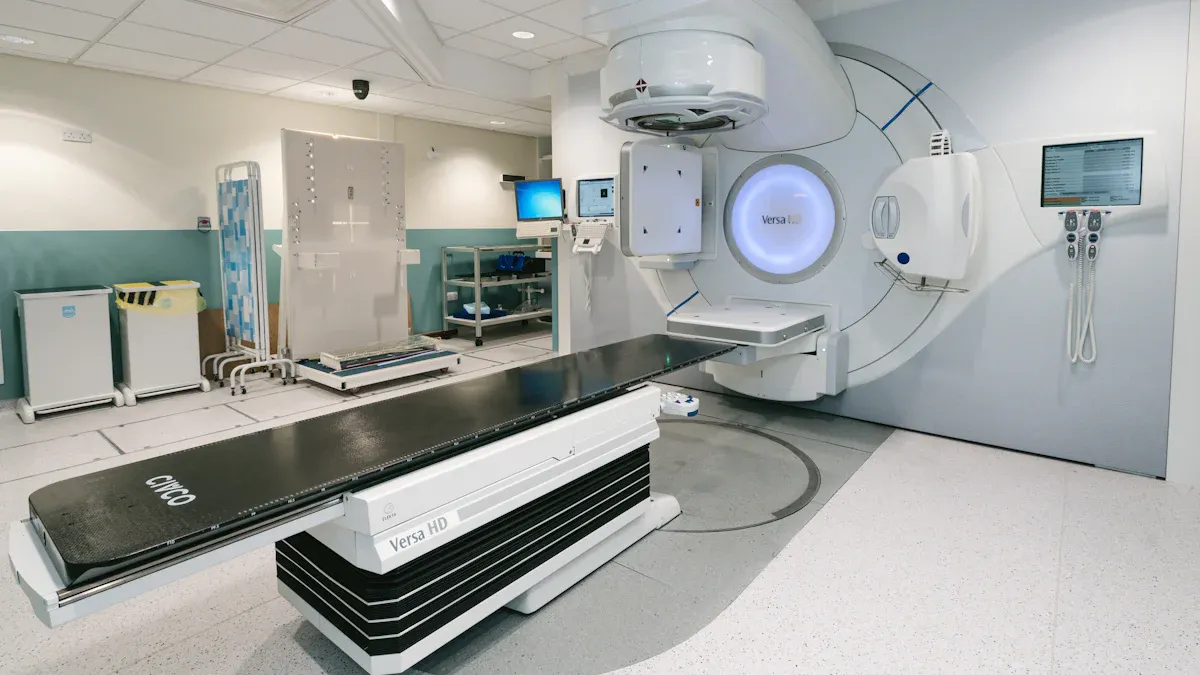
Medical equipment faces constant challenges from wear and corrosion. These issues can compromise the safety and reliability of tools you rely on daily. TAC coating offers a proven solution. It strengthens medical devices, ensuring they last longer and perform better. This innovation also helps maintain hygiene, a critical factor in healthcare environments.
Key Takeaways
- TAC Coating stops medical tools from wearing out or rusting. It helps tools last longer and work better.
- Its safe material and smooth finish make cleaning simple. This lowers the chance of spreading germs or infections.
- Using TAC Coating saves money by cutting down on repairs. It keeps tools working well for a long time.
What is TAC Coating?
Definition and Composition
TAC Coating, short for Tetrahedral Amorphous Carbon Coating, is a thin, protective layer applied to medical equipment. It is made from carbon atoms arranged in a unique structure. This structure combines the hardness of diamond with the smoothness of graphite. You can think of it as a shield that protects tools from damage while maintaining their precision.
The coating is created using advanced techniques like chemical vapor deposition (CVD). This process ensures the coating bonds tightly to the surface of medical devices. The result is a durable and uniform layer that enhances the performance of the equipment. TAC Coating is also non-toxic, making it safe for use in healthcare environments.
Key Properties
TAC Coating stands out because of its remarkable properties. First, it offers exceptional hardness, which helps resist scratches and wear. This means your medical tools stay sharp and effective for longer periods. Second, it has excellent corrosion resistance. Even when exposed to harsh chemicals or bodily fluids, the coating prevents rust and degradation.
Another key feature is its biocompatibility. TAC Coating is safe to use on devices that come into contact with the human body. It also has a low friction surface, which reduces the risk of contamination. These properties make it an ideal choice for maintaining hygiene and reliability in medical equipment.
How TAC Coating Prevents Wear and Corrosion

Mechanisms of Wear Resistance
TAC Coating acts as a protective armor for medical equipment. Its unique structure, combining diamond-like hardness with a smooth surface, helps resist wear caused by friction and repeated use. When you use medical tools, constant contact with other surfaces can lead to scratches and abrasions. TAC Coating minimizes this damage by creating a tough barrier that absorbs the impact and reduces surface degradation.
Another way TAC Coating prevents wear is by lowering friction. The coating’s low-friction properties ensure smoother interactions between surfaces. This reduces the stress on moving parts, keeping your tools functional for longer periods. For example, surgical instruments coated with TAC maintain their sharpness and precision, even after multiple uses. This durability ensures that your equipment performs reliably in critical situations.
Corrosion Protection Capabilities
Corrosion is a major threat to medical equipment, especially when exposed to bodily fluids, sterilization chemicals, or moisture. TAC Coating provides a robust shield against these elements. Its non-reactive surface prevents oxidation, which is the primary cause of rust and corrosion. This means your tools stay free from rust, even in challenging environments.
The coating also creates a barrier that blocks harmful substances from penetrating the surface of your devices. This protection ensures that your equipment remains hygienic and safe for use. By preventing corrosion, TAC Coating not only extends the lifespan of your tools but also maintains their appearance and functionality. This makes it an essential solution for preserving the quality of medical equipment.
Benefits of TAC Coating in Medical Equipment
Enhanced Durability and Longevity
TAC Coating significantly improves the lifespan of medical equipment. Its hard, protective layer shields tools from scratches, abrasions, and other forms of wear. When you use coated instruments, they maintain their sharpness and precision even after repeated use. This durability ensures that your tools perform reliably during critical procedures.
The coating also resists damage caused by harsh cleaning processes. Sterilization methods, which often involve high temperatures or strong chemicals, can weaken uncoated devices over time. With TAC Coating, your equipment stays intact and functional, reducing the need for frequent replacements.
Biocompatibility and Hygiene Improvement
Hygiene is crucial in healthcare settings, and TAC Coating helps you maintain it. The coating’s smooth, non-porous surface minimizes the risk of bacteria or contaminants sticking to your tools. This makes cleaning easier and more effective.
Additionally, TAC Coating is biocompatible, meaning it is safe for use on devices that come into contact with the human body. Whether it’s surgical instruments or implantable devices, the coating ensures patient safety while maintaining the sterility of your equipment.
Cost-Effectiveness and Maintenance Reduction
Investing in TAC Coating reduces long-term costs. By extending the lifespan of your tools, the coating minimizes the need for replacements. You also save on maintenance since the coating resists wear and corrosion.
Moreover, the enhanced durability means fewer interruptions caused by equipment failure. This reliability allows you to focus on providing quality care without worrying about tool performance. TAC Coating proves to be a cost-effective solution for maintaining high standards in healthcare.
Applications of TAC Coating in Medical Equipment

Surgical Instruments
Surgical instruments require precision and durability to perform effectively. TAC Coating enhances these tools by providing a hard, wear-resistant surface. This coating ensures that instruments like scalpels, forceps, and scissors maintain their sharpness and functionality even after repeated use. You can rely on coated instruments to deliver consistent performance during critical procedures. Additionally, the smooth surface of the coating reduces friction, making the tools easier to handle and clean. This helps maintain hygiene and prevents contamination in surgical environments.
Implantable Devices
Implantable devices, such as pacemakers and orthopedic implants, must withstand harsh conditions inside the human body. TAC Coating offers excellent biocompatibility, ensuring these devices remain safe and effective. The coating protects against corrosion caused by bodily fluids, extending the lifespan of implants. It also minimizes the risk of adverse reactions, providing patients with a safer experience. By using coated implants, you can ensure long-term reliability and improved outcomes for patients.
Diagnostic Tools
Diagnostic tools, including endoscopes and imaging equipment, benefit greatly from TAC Coating. The coating enhances the durability of these devices, allowing them to withstand frequent use and sterilization. It also prevents scratches and wear, ensuring accurate results during diagnostic procedures. With TAC Coating, you can trust your diagnostic tools to deliver precise and reliable performance, even in demanding healthcare settings.
Why TAC Coating is Superior to Other Coating Solutions
Comparison with Traditional Coatings
When comparing TAC Coating to traditional coatings, the differences become clear. Many conventional coatings, such as chrome plating or polymer-based layers, lack the durability needed for medical equipment. These coatings often wear down quickly under repeated use or exposure to harsh cleaning agents. You may find yourself replacing tools more frequently, which increases costs and disrupts workflows.
Traditional coatings also struggle with corrosion resistance. Materials like stainless steel can corrode over time, especially when exposed to bodily fluids or sterilization chemicals. TAC Coating, on the other hand, offers superior protection. Its diamond-like hardness and non-reactive surface create a barrier that resists both wear and corrosion. This ensures your tools remain functional and safe for longer periods.
Tip: TAC Coating’s low-friction surface also outperforms traditional coatings by reducing wear caused by repeated movement. This feature makes it ideal for medical devices with moving parts.
Unique Advantages of TAC Coating
TAC Coating brings unique benefits that set it apart. Its biocompatibility ensures safety for devices that come into contact with the human body. Unlike some coatings that may cause adverse reactions, TAC Coating provides a reliable solution for surgical instruments and implants.
Another advantage is its ability to maintain hygiene. The smooth, non-porous surface prevents bacteria and contaminants from sticking to your tools. Cleaning becomes easier and more effective, helping you uphold strict healthcare standards.
Durability is another standout feature. TAC Coating resists scratches, abrasions, and corrosion, extending the lifespan of your equipment. You save money on replacements and maintenance while ensuring consistent performance during critical procedures.
Note: TAC Coating combines strength, safety, and hygiene in a way that traditional coatings cannot match. This makes it the superior choice for medical equipment.
TAC Coating transforms how you protect medical equipment from wear and corrosion. Its unique properties improve performance, reliability, and safety in healthcare. By adopting this advanced solution, you invest in tools that last longer and perform better. This choice benefits both patients and medical professionals, ensuring higher standards of care.
FAQ
What makes TAC Coating different from other coatings?
TAC Coating combines diamond-like hardness with a smooth surface. It resists wear, corrosion, and contamination better than traditional coatings, ensuring longer-lasting and safer medical equipment.
Tip: TAC Coating’s biocompatibility makes it ideal for tools that contact the human body, unlike some coatings that may cause adverse reactions.
Can TAC Coating be applied to all medical devices?
Yes, TAC Coating works on various devices, including surgical instruments, implants, and diagnostic tools. Its versatility ensures enhanced durability and hygiene across different applications.
How does TAC Coating improve hygiene in healthcare?
The coating’s non-porous surface prevents bacteria and contaminants from sticking to tools. This makes cleaning easier and more effective, helping you maintain strict hygiene standards.
Note: A cleaner surface reduces infection risks, ensuring safer outcomes for patients and healthcare providers.


